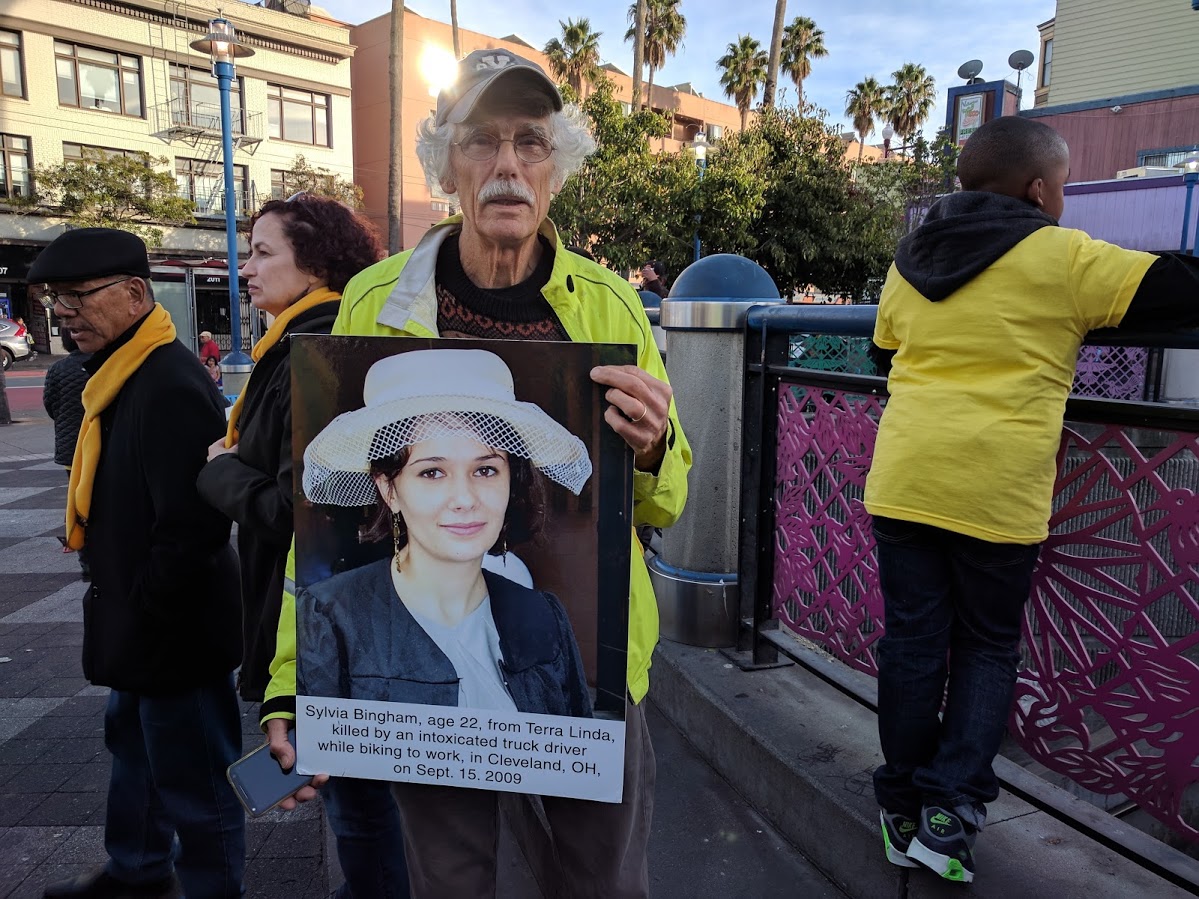Note: GJEL Accident Attorneys regularly sponsors coverage on Streetsblog San Francisco and Streetsblog California. Unless noted in the story, GJEL Accident Attorneys is not consulted for the content or editorial direction of the sponsored content.
My daughter, Sylvia Bingham, was only a few months out of college when she was struck and killed by a drug-impaired truck driver in Cleveland, OH in 2009.
As a member of San Francisco Bay Area Families for Safe Streets, I partner with many others who have lost loved ones to preventable traffic violence: Alvin Lester, one of the organization's founders, lost his son Arman in 2014. Arman was balancing two jobs while a college student and mentor when he was killed on his skateboard by an SUV driver in San Francisco’s Bayview neighborhood. Julie Mitchell, another founder, lost her son, Dylan, who had just moved to San Francisco in 2013 to start an electrician apprenticeship when he was struck and killed by the driver of a garbage truck in San Francisco’s Mission District while riding his bike to work. Gina LeBlanc’s 18-year-old son Kyle was five months shy of his 2016 high school graduation when he was killed crossing a San Jose street that lacked any pedestrian signage. Kyle’s was the third fatality at that location in five years. George Quiroz lost his 6-year-old daughter Aileen in 2013 when the driver of an SUV struck her, her aunt, and two-year-old sister in a crosswalk, also in San Jose, as they walked together to school, only blocks from their home.
As parents who lost our children to traffic violence, we’re especially aware that there’s less traffic because of COVID-19. A UC Davis study estimates that crash-related injuries and fatalities in the State were down by half in the first three weeks of California’s shelter-in-place order. Calling the shift “unprecedented,” researchers say the decline in trauma-related hospitalizations alone saved California $40 million a day.
However, our newly opened roadways have led to a worsening of a deadly behavior: speeding. The California Highway Patrol has reported an 87 percent increase ticketing motorists going over 100 MPH. The truth is that speed limits have been rising since the mid-1990s. The faster a driver is going, the more likely they are to cause a crash. A person hit by a car at 20 MPH has a 90 percent chance of survival; at 40 MPH there’s only a 15 percent chance of survival. Any faster, and survival drops to nearly zero.
That's why we must work to lower speeds, the most critical way to prevent deadly and severe injury crashes, in addition to adopting other safety policies. We must embrace these life-saving recommendations from Walk San Francisco:
- Enact a ‘no turn on red’ ordinance to prevent conflict in crosswalks. New York City and Washington DC have done so with positive results.
- Install left-turn calming devices such as strategically placed cones at intersections, reducing the speed of turning drivers and enhancing the visibility of pedestrians. New York City reduced pedestrian injuries by 20 percent by doing so.
- Complete “daylighting,” on the entire high-injury network, creating clear sightlines for both drivers and pedestrians at intersections by prohibiting parking within 30 feet of an intersection.
- Expand red-light cameras to ten additional dangerous intersections this year. San Francisco currently has only 13 red light cameras in the entire city. New York City’s red-light camera program led to an 84 percent decline in severe injuries from right-angle crashes at its over 150 signalized intersections.
- Install low-cost flashing radar speed limit signs on high-injury streets to collect speed data and discourage speeding.
But more importantly, we must reduce speed limits; speed is the #1 cause of severe and fatal crashes.
Given that governments and the public are able to work together to combat the COVID-19 public health epidemic, shouldn’t we similarly commit to a stronger preventive approach to the public health epidemic of traffic deaths? Ending traffic violence doesn't require a new vaccine or a scientific breakthrough. It just requires well-understood changes in how our streets are designed and speed limits are set and enforced. We must prioritize our health and safety above the fast movement of cars.
Stephen Bingham is an advocate with San Francisco Bay Area Families for Safe Street





